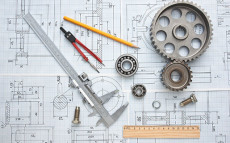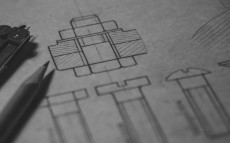- pathfindersAI
- Job Profile
Mechanical Drafters
Summary
Mechanical Drafters: Designing the Future of Industry
What They Do
Mechanical drafters play a pivotal role in the engineering and manufacturing industries. They are responsible for creating detailed technical drawings and plans that are used to produce machinery, devices, and equipment. Utilizing specialized computer-aided design (CAD) software, mechanical drafters translate engineers' and architects' concepts into precise schematics. These schematics serve as blueprints during the manufacturing process, ensuring that products are assembled correctly and function as intended. Mechanical drafters must possess a deep understanding of mechanical systems, materials, and manufacturing processes to create accurate and viable drafts.
Job Responsibilities
The daily responsibilities of mechanical drafters are multifaceted and demand a high degree of precision and attention to detail. Their primary responsibility is to produce detailed drawings and layouts from sketches or specifications provided by engineers. These drawings depict the dimensions, materials, and assembly procedures required for the manufacture of mechanical components and systems. Mechanical drafters are also tasked with revising existing drawings and designs to reflect modifications and updates. They must ensure that their drafts comply with industry standards and regulations. Additionally, mechanical drafters often collaborate with engineers, architects, and other professionals to plan and develop new design concepts, troubleshoot issues, and implement improvements to existing projects.
Essential Skills
Mechanical drafting requires a unique set of skills that integrate technical prowess with creative problem-solving. Proficiency in various CAD software programs, such as AutoCAD, SolidWorks, and Creo, is paramount. A solid understanding of geometry, mathematics, and physical sciences underpins the technical aspects of drafting work. Mechanical drafters must also possess strong analytical and critical thinking skills to interpret complex specifications and troubleshoot design challenges. Attention to detail ensures accuracy in their drafts, which is crucial for the successful translation of designs into physical products. Effective communication skills are essential for collaborating with team members and clients. Lastly, time-management skills enable drafters to handle multiple projects efficiently and meet deadlines.
Educational Pathways
Becoming a mechanical drafter typically requires completing a postsecondary education program. Aspiring drafters often pursue an associate degree in mechanical drafting or a related field, which usually takes about two years to complete. These programs offer a blend of classroom instruction and hands-on training, covering topics such as CAD software, drafting techniques, and mechanical design principles. Some drafters may pursue a bachelor's degree in mechanical engineering or industrial design for broader career opportunities. In addition to formal education, obtaining industry certifications, such as those offered by the American Design Drafting Association (ADDA), can enhance job prospects and demonstrate professional competence.
Career Prospects
The career prospects for mechanical drafters are both promising and dynamic. As industries continue to innovate and advance, the demand for skilled drafters remains strong. Mechanical drafters find employment across various sectors, including manufacturing, aerospace, automotive, and construction. Their expertise is essential for developing new technologies, optimizing production processes, and bringing innovative products to market. According to the U.S. Bureau of Labor Statistics, the median annual wage for mechanical drafters was $57,000 as of May 2020. Additionally, experienced drafters can progress to supervisory or managerial roles, or transition into related fields such as mechanical engineering, project management, or industrial design.
Conclusion
In conclusion, mechanical drafters are integral to the engineering and manufacturing industries, transforming conceptual designs into tangible products. Their responsibilities encompass producing accurate technical drawings, revising designs, and collaborating with professionals to ensure design feasibility. Mastery of CAD software, mathematical acumen, attention to detail, and strong communication skills are vital for success in this field. With a foundation in mechanical drafting education and relevant certifications, mechanical drafters can look forward to a rewarding career with diverse opportunities for advancement. As we continue to push the boundaries of technology and innovation, mechanical drafters will undoubtedly remain at the forefront of designing the future of industry.
Video
Compensation
| State | Median Salary | Median Hourly | Positions |
|---|---|---|---|
| AL | 57,960 | 27.87 | 410 |
| AZ | 75,820 | 36.45 | 970 |
| AR | 50,530 | 24.29 | 210 |
| CA | 78,610 | 37.79 | 4,170 |
| CO | 74,000 | 35.58 | 600 |
| CT | 71,490 | 34.37 | 540 |
| DE | 58,800 | 28.27 | 190 |
| DC | 90,440 | 43.48 | 30 |
| FL | 51,800 | 24.90 | 1,960 |
| GA | 61,680 | 29.66 | 770 |
| ID | 57,610 | 27.70 | 380 |
| IL | 67,920 | 32.66 | 1,150 |
| IN | 61,740 | 29.68 | 2,130 |
| IA | 62,390 | 29.99 | 510 |
| KS | 62,380 | 29.99 | 470 |
| KY | 62,980 | 30.28 | 490 |
| LA | 65,060 | 31.28 | 320 |
| ME | 67,400 | 32.40 | 410 |
| MD | 63,380 | 30.47 | 840 |
| MA | 65,810 | 31.64 | 970 |
| MI | 63,570 | 30.56 | 2,130 |
| MN | 62,810 | 30.20 | 1,320 |
| MS | 55,190 | 26.53 | 180 |
| MO | 62,790 | 30.19 | 1,210 |
| MT | 60,810 | 29.23 | 90 |
| NE | 59,030 | 28.38 | 640 |
| NV | 64,920 | 31.21 | 190 |
| NH | * | * | 230 |
| NJ | 73,620 | 35.39 | 880 |
| NM | 78,140 | 37.57 | 120 |
| NY | 69,990 | 33.65 | 1,840 |
| NC | 60,400 | 29.04 | 850 |
| ND | 58,800 | 28.27 | 50 |
| OH | 63,320 | 30.44 | 2,580 |
| OK | 62,390 | 30.00 | 650 |
| OR | 75,820 | 36.45 | 470 |
| PA | 60,460 | 29.07 | 2,050 |
| RI | 66,040 | 31.75 | 50 |
| SC | 62,950 | 30.26 | 670 |
| SD | 50,910 | 24.48 | 170 |
| TN | 60,740 | 29.20 | 1,360 |
| TX | 68,070 | 32.72 | 3,770 |
| UT | 68,210 | 32.80 | 740 |
| VA | 63,140 | 30.36 | 630 |
| WA | 75,220 | 36.17 | 1,920 |
| WV | 57,740 | 27.76 | 140 |
| WI | 59,000 | 28.37 | 2,200 |
| WY | 48,960 | 23.54 | 70 |
Similar Occupations
In this area you will find other occupations that are close to the one you were viewing in tasks, knowledge and work environment. If the primary job profile you are viewing isn't quite to your liking, take a look around and see what else is available.
Basic and Premium Accounts have more alternative occupations available than the Free account.

Architectural and Civil Drafters - 17-3011.00
Architectural and Civil Drafters create detailed technical drawings and plans used in the construction of buildings and infrastructure projects, translating designers' and engineers' ideas into precise documentation. They use computer-aided design (CAD) software to produce layouts, measurements, and specifications to guide construction activities.
-
$61,820/yr
Median Pay -
111,070
Number of Jobs

Commercial and Industrial Designers - 27-1021.00
Commercial and Industrial Designers develop and create products and systems that improve functionality, design, and usability for consumer and industrial markets. They blend art, business, and engineering to conceptualize items ranging from everyday household objects to sophisticated machinery, ensuring both aesthetic appeal and practical efficiency.
-
$76,250/yr
Median Pay -
30,810
Number of Jobs